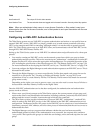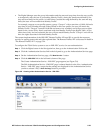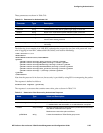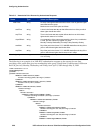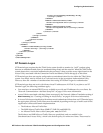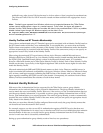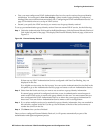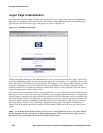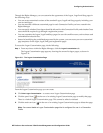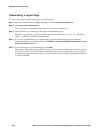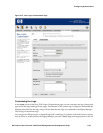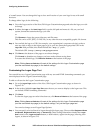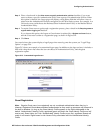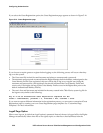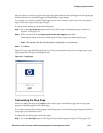
Configuring Authentication
Logon Page Customization
The 700wl Series system Rights Manager provides default Logon, Logoff, Stop, and Guest Registration
pages that are displayed when users are to be authenticated using Web-based logon. The default logon
page displays the HP ProCurve logo, and appears as shown in
Figure 5-10.
Figure 5-10. The default Logon page
Through the Rights Manager in the Administrative Console, you can customize the Logon, Logoff, Stop,
and Guest Registration pages. By customizing these pages you can identify your organization to the user
before they log in, and confirm to the user that they are logging in via the appropriate Connection Profile
within the organization. If you use multiple Authentication Policies (for example, a Business School
Authentication Policy and a Medical School Authentication Policy) you can optionally allow the user to
choose the appropriate Authentication Policy.
For special-purpose installations, such as a kiosk application, you can capture information about the users
who log in to view your site by requiring Guest users to go through a registration process. A Registered
Guest provides a username and password that are stored in the built-in database, and are associated with
the Guest Identity Profile. Once registered, a registered guest can log on again using their username and
password, and are therefore considered authenticated users when they log on to the system. As long as
the Guest Identity Profile occurs in the Rights Assignment table prior to the default Authenticated
Identity Profile, registered guests will match the Guest Identity Profile and will have only Guest access
rights.
Note: If the default Authenticated Identity Profile occurs in the Rights table prior to the Guest Identity
Profile, registered Guests will match the Authenticated Identity Profile and will receive rights based on
the Access Policy associated with the Authenticated Identity Profile.
5-30 HP ProCurve Secure Access 700wl Series Management and Configuration Guide



